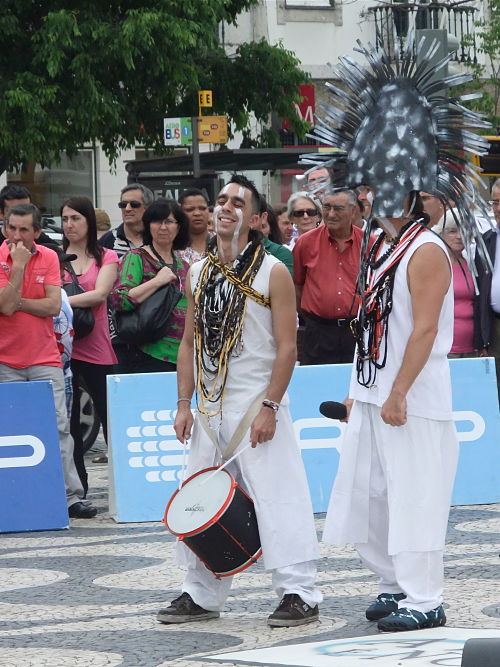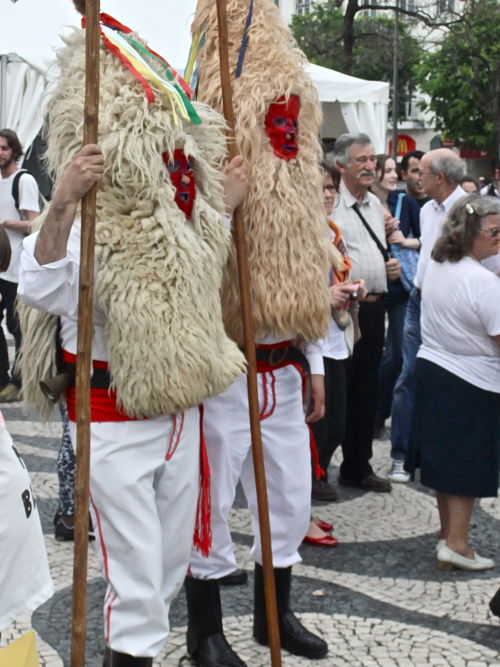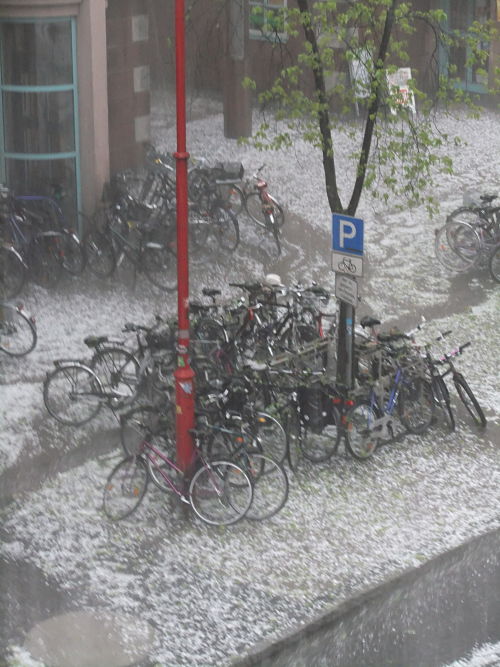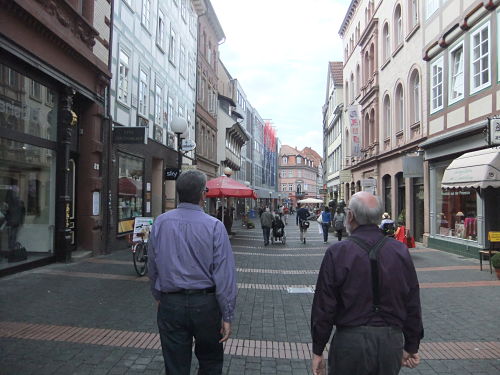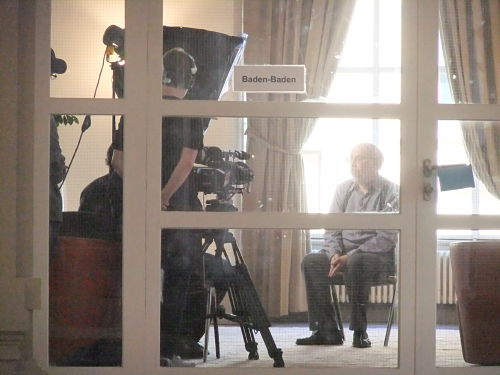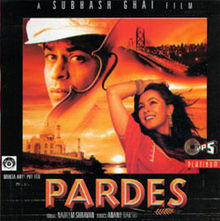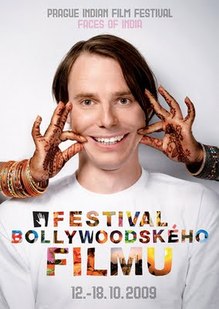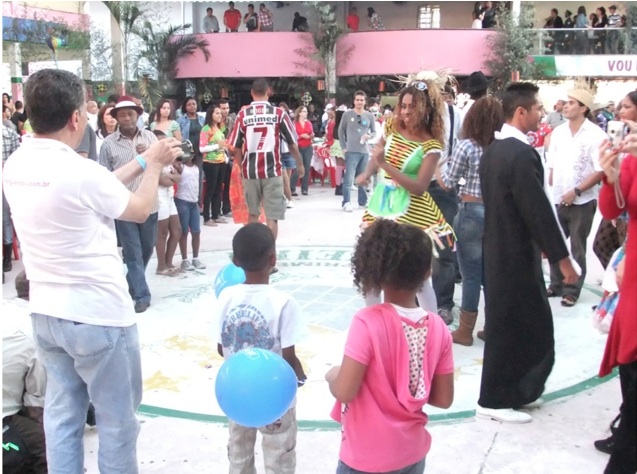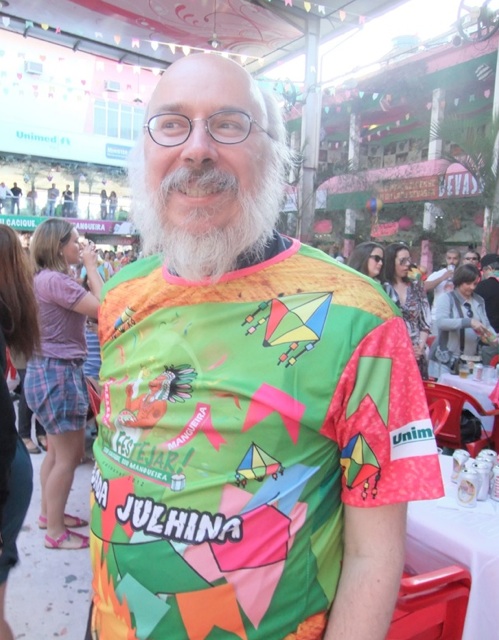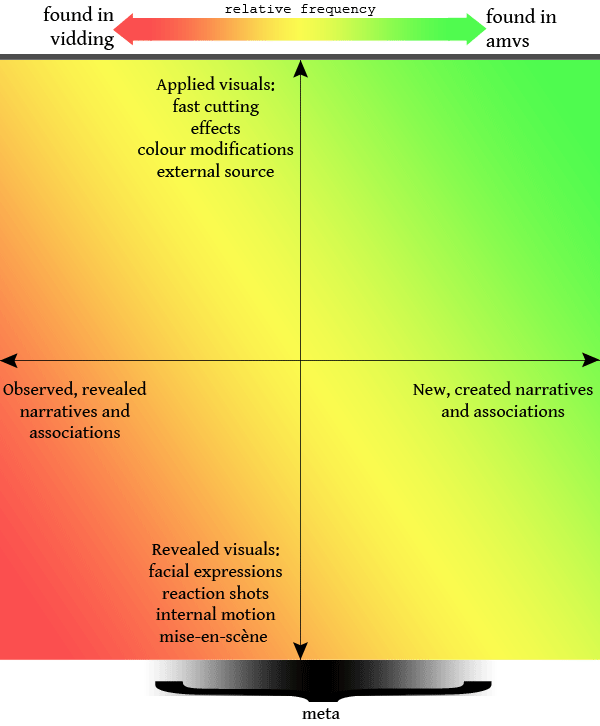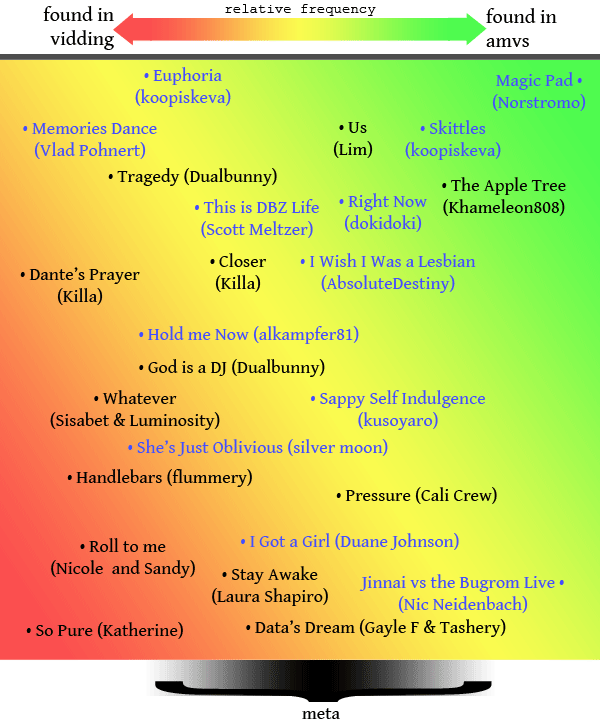As I continue to catch up on events which occurred while I was out of the country, I want to direct my readers to the special issue of Transformative Works and Cultures on "fan activism" which I co-edited with Sangita Shreshtova and the members of our Civic Paths research team. The initial call for papers appeared on this blog several years ago and thanks to your help, we were able to pull together an exceptional range of articles, representing many different forms of fan activism from around the world. The issue is now online and has already started to generate a fair amount of attention, but I wanted to make sure my regular blog readers had a chance to see what we produced. As you will see, many of my talks across Europe drew on this material, and our team is continuing to do work around this topic with the goal of producing a book length study of new forms of cultural activism in the not-too-distant future.
Below, I share the introduction to the special issue I wrote with Shreshtova. It should give you some sense of the range of materials we have assembled here. You are strongly encouraged to go to the online journal itself to read any or all of the essays described here.
Up, Up and Away! The Power and Potential of Fan Activism
by Henry Jenkins and Sangita Shreshtova
[Fandom] is built on psychological mechanisms that are relevant to political involvement: these are concerned with the realm of fantasy and imagination on the one hand, and with emotional processes on the other...The remaining question then becomes whether and how politics can borrow from the elements of popular culture that produce these intense audience investments, so that citizenship becomes entertaining.
--Liesbeth van Zoonen, Entertaining the Citizen
Scratch an activist and you're apt to find a fan. It's no mystery why: fandom provides a space to explore fabricated worlds that operate according to different norms, laws, and structures than those we experience in our "real" lives. Fandom also necessitates relationships with others: fellow fans with whom to share interests, develop networks and institutions, and create a common culture. This ability to imagine alternatives and build community, not coincidentally, is a basic prerequisite for political activism.
--Steven Duncombe, "Imagining No-Place"
In 2011, American political leaders and activists were surprisingly concerned with an 80-plus-year-old popular culture icon: Superman. When presidential candidate Rick Perry was asked by a 9-year-old child during a campaign stop which superhero he would want to be, the tough-talking Texan chose the man from Krypton, because "Superman came to save the United States!" (Well 2011). At almost that same moment, conservative commentators were up in arms because in an alternative universe DC comics story, Superman denounced his American citizenship to embrace a more global perspective: "I'm tired of having my actions construed as instruments of US policy. 'Truth, Justice, and the American way!'--It's not enough any more." Right-wing rage was expressed by one FoxNews.com reader: "This is absolutely sickening. We are now down to destroying all American Icons. How are we going to survive as a Nation?" (Appelo 2011). Such responses suggest a widespread recognition that popular mythologies may provide the frames through which the public makes sense of its national identity.
Meanwhile, immigrant rights activists were questioning when Superman ever became an American citizen or whether he even possessed a green card, given that he entered the country without permission and, we must presume, without documentation, a refugee from a society in turmoil who has sought to hide his origins and identity from outside scrutiny ever since.
Hari Kondabolu, a South Asian comedian, recorded a video entitled "Superman as Immigrant Rights Activist," distributed through Colorlines , asking why no one ever tried to deport Superman for "stealing jobs" and suggesting that other immigrants might wear glasses, like Clark Kent does, to mask their identities. Photographer Dulce Pinzon produced a powerful set of images depicting a range of (mostly Marvel) superheroes performing the jobs often done by undocumented workers. As Thomas Andrae (1987; see also Engle 1987) has noted, at the time of his origins in the late Depression era, Superman adopted an explicitly political stance ("the champion of the oppressed") rather than the more vaguely civic orientation of subsequent decades. As Matt Yockey demonstrates in regard to Wonder Woman in this issue, superheroes have long functioned as mythological figures or rhetorical devices for debates around identity politics. Even DC Comics has described Superman as "the ultimate immigrant" (Perry 2011).
Arely Zimmerman (forthcoming), a postdoc with the Media Activism and Participatory Politics Project (part of USC's Civic Paths Project), interviewed 25 undocumented youth activists involved in the campaign to pass the Dream Act. She was struck by how often superheroes cropped up in her exchanges. One respondent described the experience of discovering other undocumented youth online as like "finding other X-Men." Another compared their campaign, which involved youth from many different backgrounds, to the Justice League. A third suggested that posting a video on YouTube in which he proclaimed himself "proud" and "undocumented" had parallels to the parallels to the experience of Spider-Man, who had removed his mask on national television during Marvel's Civil Wars story line. A graphic created for an online recruitment campaign used the image of Wolverine to suggest what kind of hero youth volunteers might aspire to become.
On the one hand, we might read these various deployments of the superheroes as illustrating the trends Liesbet van Zoonen (2005) describes: groups promoting social change are tapping the affective and imaginative properties of popular culture to inspire a more intense connection with their supporters. In this issue, Jonathan Gray shows similar appropriations of images from Star Wars and a range of other popular media franchises during labor rights protests in Madison, Wisconsin. Gray argues that such images (which have also been widely associated with the Occupy Wall Street movement) proliferate because popular culture, especially blockbuster franchises, constitutes a common reference point (shared between fans and more casual consumers) within an otherwise diverse and fragmented coalition of protestors and observers. Gray stresses the morale and community-building work performed through the remixing of popular culture for those gathered in an icy Wisconsin winter to express their support for collective bargaining. Zimmerman (forthcoming) also suggests that the Dream activists' use of pop culture references might be understood as part of a larger strategy to signal their assimilation into American culture. Given how much contemporary speech of all kinds is full of snarky pop culture references, it is not surprising that such references are also reshaping our political rhetoric, especially as campaigns seek to speak to young people who have famously felt excluded from traditional campaigns and have often been turned off by inside-the-beltway language. Buffy the Vampire Slayer goes to Washington!
Yet as the epigraph from Duncombe (this issue) suggests, such popular culture references also reflect the lived experiences of activists who also are fans, whether understood in the casual sense of someone who feels a strong emotional connection to a particular narrative or in the more active sense of someone who has participated in a fan community or engaged in transformative practices. Civil rights leaders in the 1960s deployed biblical allusions because part of what they shared were meaningful experiences within black church congregations. Zimmerman's Dream activists referenced superheroes because reading and discussing comics was part of their everyday lives as young people, because these references helped them think through their struggles, because they offer such vivid embodiments of heroic conflicts and deep commitments. Unlike Perry, who had only a faint recollection of Superman's mythology and acknowledged that he was no longer actively reading comics, these allusions to superhero comics were apt rather than opportunistic, grounded in a deep appreciation of who these characters are and how their stories have evolved over time. That is, they show the kinds of mastery we associate with fans. Here, we see what Duncombe describes as the fan within the activist.
However, we can push the idea of fan activism one step farther: by now, the capacity of fan communities to quickly mobilize in reaction to a casting decision or a threat of cancellation has been well established, going back to the now-legendary letter-writing campaign in the 1960s that kept Star Trek on the air. Fan groups have also had a long history of lending their support to the favorite causes of popular performers and producers, or more generally working in support of charity. Some slash fans, for example, have been motivated to march in gay rights parades, raise money for AIDS research and awareness, or, more recently, work in support of marriage equality. Fans have rallied to challenge attempts to regulate the Internet, restrict their deployment of intellectual property, or censor their content. For example, in this issue, Alex Leavitt and Andrea Horbinski trace the responses of Japanese otaku, involved in the creation of dôjinshi (underground comics), to metropolitan Tokyo ordinance Bill 156, which they perceived as an attempt to curtain their artistic freedom.
More recent efforts (such as Racebending, the Harry Potter Alliance, Imagine Better, the Nerdfighters) deploy these same strategies and tactics to support campaigns for social justice and human rights, inspiring their supporters to move from engagement within participatory culture to involvement in political life. Fan activism of the kinds we've known about for years models many effective approaches for using social media to create awareness and mobilize supporters--tactics now being adopted by even traditional charities and activist organizations as they adapt to a networked society.
All of this suggests the urgent need for scholars to explore more fully the many different potential relationships between fandom and political life, since fan studies as a research paradigm has something vital to contribute to larger considerations of the relationship between participatory culture and civic engagement. Fan studies has long depicted fandom as a site of ideological and cultural resistance to the heteronormative and patriarchal values often shaping mass media. Such work is and remains highly valuable as we seek to understand the place of fandom in contemporary culture, but our focus here pushes beyond abstract notions of cultural resistance to focus on specific ways that fan culture has affected debates around law and public policy. Many fans have resisted efforts to bring politics into fandom, seeing their fan activities as a release from the pressures of everyday life, or preferring the term charity rather than the more overtly political term activism to describe their pro-social efforts.
Our goal is not to instrumentalize fandom, not to turn what many of us do for fun into something more serious; fandom remains valuable on its own terms as a set of cultural practices, social relationships, and affective investments, but insofar as a growing number of fans are exploring how they might translate their capacities for analysis, networking, mobilization, and communication into campaigns for social change, we support expanding the field of fan studies to deal with this new mode of civic engagement.
Political participation and fan activism
This issue's two editors are part of the Civic Paths Project research group, housed in the Annenberg School for Communications and Journalism at the University of Southern California. This group has partnered with the Spencer and MacArthur foundations to try to document new forms of political participation that are affecting the lives of young people. Our work is part of a larger research network that is trying to develop a model for understanding what is being called participatory politics. Through our internal discussions, we had begun to identify the concept of fan activism as central to addressing larger questions about what might motivate young people, who are often described as apathetic, to join civic and political organizations. We had located a core body of scholarship, such as the work of van Zoonen (2005), which examined how the playful, affective, and fantasy aspects of fandom were starting to inform political discourse, or the work of Earl and Kimport (2009), which discussed fan online campaigns as part of a larger exploration of what networked politics might look like, or the work of Daniel Dayan (2005), which debated the similarities and differences between audiences and publics. We had already identified some powerful examples of how fan-based groups had helped support civic learning and had developed resources and practices that could quickly mobilize supporters behind emergencies, charities, or human rights campaigns.
We knew that there must be many more examples out there. Still, after we released the call for papers, we were blown away by the range of submissions we received from all over the world, describing other examples of fan activism in practice, debating why calls for fan participation sometimes yield spectacular results and other times fall flat, contesting the borders of fan activism, speculating about its contributions to the public sphere, and making important distinctions between top-down celebrity-run models and bottom-up participatory ones. As you will see, this issue is overflowing with cutting-edge work that takes fans seriously as political agents and that draws on a range of different theories of citizenship and democracy to explain what happens when fans act as citizens. Examples here encompass a wide variety of fandoms--Harry Potter, The X-Files, Buffy the Vampire Slayer, The Colbert Report, comic books, pop music, and Bollywood.
Essays in this issue
The Civic Paths team is well represented here, with a cluster of three essays offering multiple and complimentary frames for discussing fan activism, and two other contributors (Ritesh Mehta and Alex Leavitt) are active group members. Taking a deep dive into the existing literature around cultural and political participation, Melissa M. Brough and Sangita Shresthova provide an overview of core debates surrounding fan activism, including the diverse forms that participation may take, the tension between resistance and participation as competing models, the value of affect and content worlds, and the criteria by which we might measure such campaigns' success and sustainability. They argue that the study of fan activists may make a significant contribution to cross-disciplinary debates about citizenship and political engagement.
Henry Jenkins maps the history of fan-based activism, providing a context for understanding the Harry Potter Alliance, perhaps the most highly visible of the new generation of fan activist groups. Jenkins defines fan activism as "forms of civic engagement and political participation that emerge from within fan culture itself, often in response to the shared interests of fans, often conducted through the infrastructure of existing fan practices and relationships, and often framed through metaphors drawn from popular and participatory culture" (¶1.8). By exploring the concept of "cultural acupuncture," a phrase coined by HPA's founder, Andrew Slack, Jenkins explores how fannish borrowings from J. K. Rowling's fictions inspire and inform the group's diverse interventions (from an initial focus on human rights and genocide in Darfur to more recent campaigns pushing Warner Bros. to tie their chocolate contracts to fair trade principles).
Neta Kligler-Vilenchik, Joshua McVeigh-Schultz, Christine Weitbrecht, and Chris Tokuhama share some of the results of Civic Path's extensive fieldwork, interviewing young participants from the Harry Potter Alliance and Invisible Children, the latter a San Diego-based human rights organization that deploys various forms of participatory culture to motivate high school and college students to become more aware of how Ugandan warlord Joseph Kony has kidnapped and conscripted child soldiers. Tracing the trajectories by which these young people become more deeply involved in these efforts, the authors suggest the importance of shared media experiences, rich content worlds, and a desire to help in changing how young people see themselves as political agents. From an initial focus on fan activism, the Civic Paths project has expanded the scope of its research to consider the participatory culture practices associated with Dream Act activism, the efforts of college-aged libertarians, the work of the Nerd Fighters and Imagine Better, and the political and cultural activities of Muslim American youth, each offering models for understanding the cultural and political factors affecting the lives of contemporary American young people.
Ashley Hinck extends this special issue's consideration of the Harry Potter Alliance, drawing on core concepts from the literature of social movements and the public sphere. Focusing primarily on their campaign around Darfur, she argues that the HPA taps into the world of Hogwarts to construct what Hinck calls a "public engagement keystone," defined here as a "touchpoint, worldview, or philosophy that makes other people, actions, and institutions intelligible" (¶4.6). The fact that Harry Potter is so widely read, known, and loved not only by hard-core fans but by many who are not part of fandom makes it a useful resource for bridging the two, helping to revitalize public discourse around human rights concerns in Africa. Lili Wilkinson also explores the value of content worlds from popular culture in facilitating new kinds of political interactions, in this case through an application of Foucault's notion of heterotopia to understanding the links between John Green's young adult novel Paper Towns and his involvement in the Nerdfighters, an informal network of young people who use social media and video blogging to "reduce world suck." Though coming from different theoretical backgrounds, Kligler-Vilenchik et al., Hinck, and Wilkinson all converge around the importance of reimaging the world through shared fantasies.
Another central strand running through the discussion has to do with the differences between efforts of celebrities (authors such as John Green, pop stars such as Hong Kong's Ho Denise Wan See, cult television actors such as Gillian Anderson, filmmakers such as Kevin Smith, television show runners such as Joss Whedon, and comedians such as Stephen Colbert) to mobilize their fans around their pet causes and more grassroots efforts by fans to draw resources from popular culture to help fuel their own efforts at social change. A group like Nerdfighters straddles the line between the two--they are partially a response to the ongoing cultural productions of the brothers John and Hank Green (as Wilkinson suggests) but also a much more open-ended, participatory space, where anyone who wants to claim the nerdfighter identity can produce media and rally support behind his or her own ideas about what might constitute a better society. Lucy Bennett offers a critical review of the literature surrounding celebrity-based activism, exploring how such causes often take off because of the sense of intimacy the stars create with their following. Bethan Jones challenges a tradition of research that has tended to pathologize the parasocial relations between media fans and celebrities by describing the ways that X-Files cast member Gillian Anderson was able to inspire her fans to raise money for various charities. Tanya R. Cochran examines the efforts of Joss Whedon (Buffy the Vampire Slayer, Firefly, Angel, Dollhouse) to use his blog to increase awareness about sexual violence against women. Cochran sees Whedon's promotion of feminism as consistent with the focus on strong female characters across his television series, reinforcing the themes that draw fans to his properties in the first place.
The idea that the personality of celebrities, as much as the themes of popular fictions, may shape what issues fan activists embrace (and in this case, which issues generate little or no response) is further explored in Tom Phillips's exploration of the failed attempt by Kevin Smith (Clerks, Chasing Amy, Dogma) at stimulating fans to write letters to Southwest Airlines when the filmmaker was removed from his flight because he was viewed as "too fat to fly." Although the incident sparked online conversations around "corporate practice, body image, and consumer rights" (¶0.1), Smith's fans were not able to cohere around a strategy for exerting pressure on the airline. Cheuk Yi Lin explores why a sexually ambiguous pop star in Hong Kong has offered fans new language and images to represent their own erotic identities, but her queer fans have not coalesced into institutional politics around the rights of sexual minorities. Any urge toward more overtly political responses are dampened both by the cultural traditions of Hong Kong and by the institutional structures surrounding the fandom.
Although the first wave of research has stressed the potentials for fan activism, such practices are still relatively rare, with most forms of fandom stopping at the level of creative expression and not translating into collective action. For this reason, studies such as those by Phillips and Lin, which help us to understand the constraints on fan activism, may prove as useful in the long term as those studies which document successful models for translating fan investments into social change. Further challenging a utopian view of fan activism, Sun Jung explores antifandom around the K-Pop star Tablo, showing how some fan discourse may incorporate intense nationalism and even racism, even as other groups actively and productively challenge these discourses.
Contributing to van Zoonen's notion of the entertained citizen, several articles engage the direct connection between the political sphere (as traditionally defined) and participatory cultures. Andreas Jungherr investigates the German federal elections in 2009, arguing that citizen use of new media platforms and practices challenges the candidates' top-down communication practices. Contrasting design and deployment of such strategies across the German political spectrum, Jungherr finds that the participatory possibilities of emerging political practices vary depending on ideology. Jungherr concludes that the more liberal German Social Democrats (SPD) were more successful in designing an online environment that supported grassroots participation than the German conservative party (CDU). In the United States, The Colbert Report, a satirical late-night television program featuring Stephen Colbert, a character who is a parody of conservative media personalities, further blurs the lines between politics and entertainment. Marcus Schulzke shows how the program encouraged audiences to remix content and otherwise manipulate the words and images of political figures in ways that foster critical media literacies. By now, the idea that young Americans are as apt to learn about the political system through such news-comedy programs as from traditional journalism has become commonplace, while the program producers have sought to link creative expression and political participation to what it means to be a fan of their shows.
The simultaneously transnational and local dimensions of fan activism are another strand that runs through this issue. With examples of fan activism that include South Korea, Japan, Hong Kong, Germany, Australia, and India, the essays in this issue expand the transnational dimensions of fan activism. These examples highlight some of the similarities between various instances and discussions of fan activism (including the role of communities and content worlds, catalyzing moments, and challenges to sustained mobilization), but we are also acutely sensitive to the local dimensions and specifications of these mobilizations. In sharp contrast to the United States, where we are constantly working to establish participatory culture links to the political sphere, Aswin Punathambekar aptly observes that the connection between participatory culture and politics is "not news to anyone in India." Punathambekar goes even further, observing that the struggle in India is to, in fact, demonstrate the "ordinariness of participatory culture." Complementing this observation, and using a public protest inspired by the a Bollywood film to demonstrate his argument, Ritesh Mehta proposes "flash activism" as a crucial element of India's civil society.
Kony 2012
The power and challenges of activism through fanlike engagement with content worlds came into sharp focus with Invisible Children's Kony 2012 campaign, an effort to increase public awareness of the human rights violations and genocide conducted by a Ugandan warlord. At the time of writing, the 30-minute Kony 2012 film released at 12 PM on March 5, 2012, has topped 76 million views on YouTube to become one of the most viewed and fastest-spreading videos in YouTube history. In The Daily Show's coverage of Kony 2012 on March 12, 2012, host Jon Stewart sets up the popularity of the film by saying, "This guy Kony is probably dropping some sick beats." The show cuts to an excerpt from Kony 2012 in which Jason Russell's voice describes the war crimes committed by the LRA set to images of what we gather are victims of those atrocities. We now cut back to a shocked Jon Stewart who goes on to exclaim, "So a thirty-minute video on child soldiers has gone viral--how popular can this thing be? I am sure it's not teenage girl sings song about day of the week hot." The show cuts to mainstream news media coverage of Kony 2012 focused on its extraordinary reach.
Given this almost overwhelming visibility, the film--and with it Invisible Children as an organization--was the subject of sharp debate. In the following days, IC's financials, their activities in Uganda, and their support of military action to "bring Joseph Kony to justice" were examined, debated, and critiqued ad nauseam in news media, through discussion forums, and on IC's own public Facebook page. The importance of these issues notwithstanding, these debates have by and large failed to recognize why the IC has been so incredibly spreadable (to borrow Henry Jenkins's term). Yes, the film is very well edited, and yes, its message, "make Kony famous," is compelling. But as Henry Jenkins (2012) points out, the success of the Kony 2012 YouTube campaign owes much to the fanlike support IC has built around its films over its past eight years of existence. In asking their supporters to reach out to a range of celebrities and policy makers who have a high level of visibility through social media, the organization also tapped into the desire of fans to see their favorites take a stand on issues that matter to them. With Kony 2012, IC activated this supporter base, which then willingly, strategically, and enthusiastically tweeted, posted, and then reposted the film to set its phenomenal spread in motion. They supported it with such fervor that they surpassed IC's goal of getting 500,000 views by the end of 2012 within a few hours.
IC and its supporters were caught off guard by the barrage of criticism levied at Kony 2012. Some, such as Ethan Zuckerman (2012), have suggested that the rapid spread of the video was a consequence of its simplification of complex political issues, wondering how online networks might be deployed to further complicate and nuance the frames that it proposes. As Civic Paths researcher Lana Swartz (2012) suggests, IC focused more on having their media be spreadable (widely circulated) rather than drillable (open to deeper investigation). For example, before Kony 2012, few IC supporters were encouraged to actively seek out more information about the Lord's Revolutionary Army, the militia that Kony heads. Instead, they were generally content with carefully replicating the accurate but somewhat simplistic narrative they received through IC's media. Fans of many media franchises have sought to drill deeper into their content worlds, trying to encapsulate everything that was known about what happened on the island in Lost or expanding the story line through fan fiction writing projects. In this way, fandom's search for hidden depths in seemingly simple texts offers an alternative model for how a group like IC might achieve the more nuanced framing Zuckerman sought and might give their rank-and-file members greater skills at parsing competing truth claims made about what is happening on the ground in Uganda.
In our call for submissions, we set out to understand how the imaginative practices supported by fandom, at times facilitated by digital media, may inform civic and political mobilization and how we may rethink our understanding of engagement in the civic and political spheres through the lens of fandom. The articles included in this issue not only exceed these objectives, but they also point to the extreme timeliness of this endeavor. From undocumented superheroes to humanitarian assistance in the name of Harry Potter, fandom clearly has a lot to teach us about activism in the age of social media and participatory culture.
5. Acknowledgments
Based at the University of Southern California, the Media Activism and Participatory Politics Project (MAPP) is part of Civic Paths Project. The project gratefully acknowledges support from the John D. and Catherine T. MacArthur Foundation Research Network on Youth and Participatory Politics (YPP) and the Spencer Foundation.
We thank the authors in this issue, whose original work makes TWC possible; the peer reviewers, who freely provide their time and expertise; the editorial team members, whose engagement with and solicitation of material is so valuable; and the production team members, who transform rough manuscripts into publishable documents.
The following people worked on TWC No. 10 in an editorial capacity: Henry Jenkins and Sangita Shresthova (guest editors); Kristina Busse and Karen Hellekson (editors); Anne Kustritz, Patricia Nelson, and Suzanne Scott (Symposium); and Louisa Stein (Review).
The following people worked on TWC No. 10 in a production capacity: Rrain Prior (production editor); Beth Friedman, Shoshanna Green, and Mara Greengrass (copyeditors); Wendy Carr, Kristen Murphy, and sunusn (layout); and Kallista Angeloff, Amanda Georgeanne Michaels, Carmen Montopoli, and Vickie West (proofreaders).
TWC thanks the journal project's Organization for Transformative Works board liaison, Francesca Coppa. OTW provides financial support and server space to TWC but is not involved in any way in the content of the journal, which is editorially independent.
TWC thanks all its board members, whose names appear on TWC's masthead, as well as the additional peer reviewers who provided service for TWC No. 10: Katherine Chen, Bertha Chin, Matthew Costello, Ashley Hinck, Ian Hunter, Alex Jenkins, Jeffrey Jones, Rachael Joo, Deborah Kaplan, Flourish Klink, Michael Koulikov, Bingchun Meng, Christopher Moreman, Nele Noppe, Amy Shuman, Fred Turner, Emily Wills, and Ethan Zuckerman.
Note
1. These quotes are excerpted from interviews carried out by Arely Zimmerman for the Media, Activism, and Participatory Politics Project between December 2010 and July 2011. Institutional review board approval was secured for this research.
Works cited
Andrae, Thomas. 1987. "From Menace to Messiah: The History and Historicity of Superman," in American Media and Mass Culture: Left Perspectives, edited by Donald Lazare. Berkeley: University of California Press.
Appelo, Tom. 2011. "Superman Renounces US Citizenship, as Warners, DC Comics Bids for Global Audiences." Hollywood Reporter, April 28.
Dayan, Daniel. 2005. "Mothers, Midwives and Abortionists: Genealogy, Obstetrics, Audiences and Publics." In Audiences and Publics: When Cultural Engagement Matters for the Public Sphere, edited by Sonia Livingstone, 43-76. London: Intellect.
Earl, Jennifer, and Katrina Kimport. 2009. "Movement Societies and Digital Protest: Fan Activism and Other Nonpolitical Protest Online." Sociological Theory 27:220-43. doi:10.1111/j.1467-9558.2009.01346.x.
Engle, Gary. 1987. "What Makes Superman So Darned American?" In Superman at Fifty: The Persistence of a Legend, edited by Dennis Dooley and Gary Engle. Cleveland, OH: Octavia.
Jenkins, Henry. 2012. "Contextualizing #Kony2012: Invisible Children, Spreadable Media, and Transmedia Activism." Confessions of an Aca-Fan, March 12. http://henryjenkins.org/2012/03/contextualizing_kony2012_invis.html.
Perry, Alexander. 2011. "The Immigrant Superman." Arte Y Vida Chicago, September 1.
Swartz, Lana. 2012. "Invisible Children: Transmedia, Storytelling, Mobilization." Working Paper, March 11.
van Zoonen, Liesbet. 2005. Entertaining the Citizen: When Politics and Popular Culture Converge. Lanham, MA: Rowman & Littlefield.
Well, Dan. 2011. "Candidates' Favorite Super Hero: Superman Chosen by Four," Newsmax, December 29.
Zimmerman, Arely. Forthcoming. DREAM Case Project Report. Media Activism and Participatory Politics Project, University of Southern California, Los Angeles.
Zuckerman, Ethan. 2012. "Unpacking Kony 2012." My Heart's in Accra, March 8.
 We were able to visit a monument in Lisbon to Henry and the age of exploration. Trust me, when cities start erecting monuments to Henrys, they get my attention. But this was a particularly stunning piece of sculpture -- which manages to evoke the plow of a ship pointing out towards the "new world" and at the same time, personify the rugged seamen who went on those first voyages. On the trip, though, I learned from a book called The First Frontier that Basque fishermen had been traveling to the coasts of Canada and the United States for centuries before their government officially "discovered" this part of the world, which complicates this story considerably. What I also learned was the huge impact that this period had on the architectural style of the city -- where the local architecture incorporated iconography associated with ships (such as ropes) into their design
We were able to visit a monument in Lisbon to Henry and the age of exploration. Trust me, when cities start erecting monuments to Henrys, they get my attention. But this was a particularly stunning piece of sculpture -- which manages to evoke the plow of a ship pointing out towards the "new world" and at the same time, personify the rugged seamen who went on those first voyages. On the trip, though, I learned from a book called The First Frontier that Basque fishermen had been traveling to the coasts of Canada and the United States for centuries before their government officially "discovered" this part of the world, which complicates this story considerably. What I also learned was the huge impact that this period had on the architectural style of the city -- where the local architecture incorporated iconography associated with ships (such as ropes) into their design








